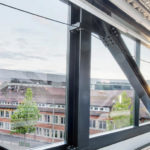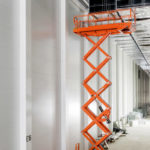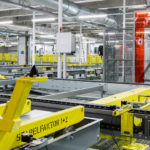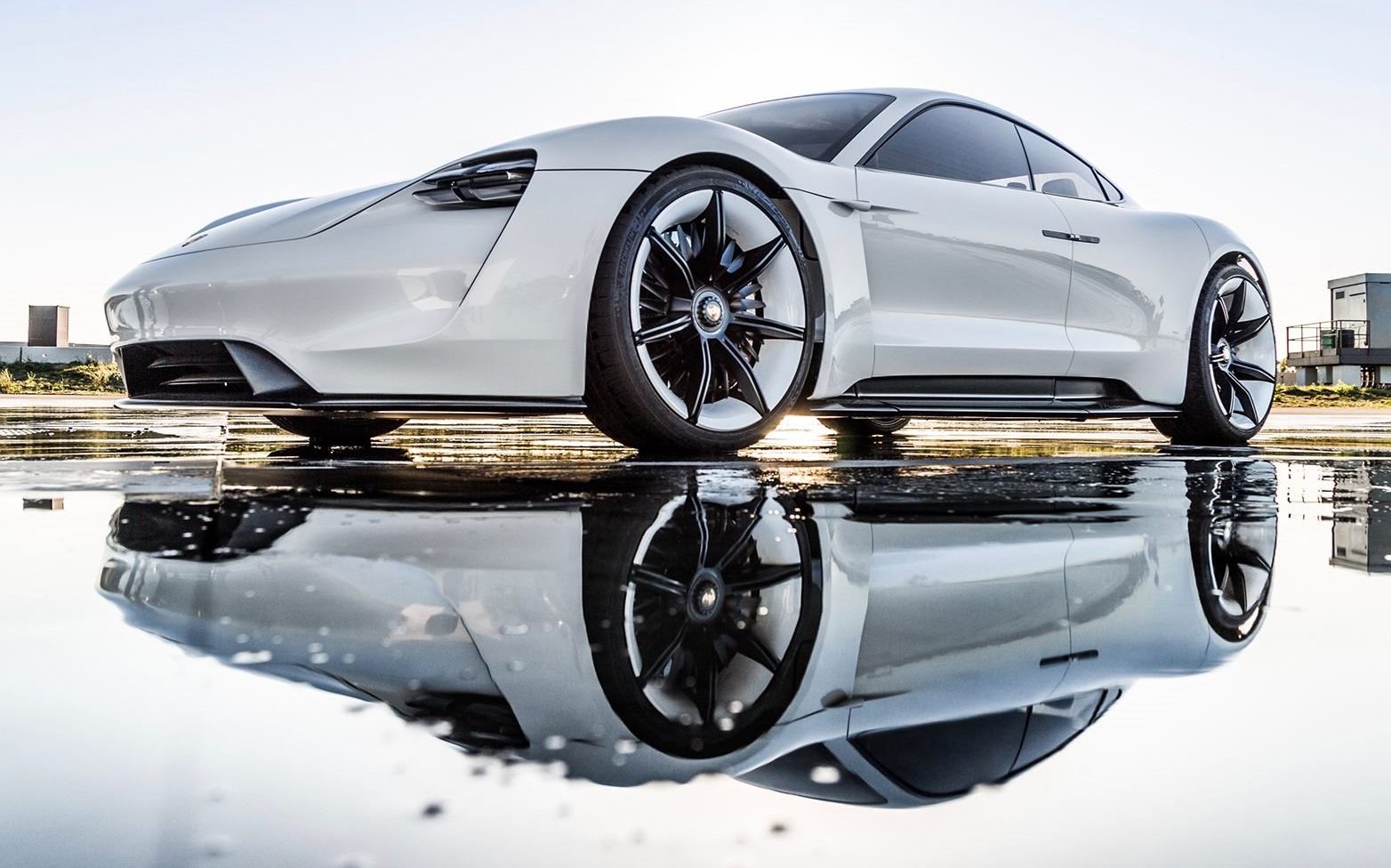
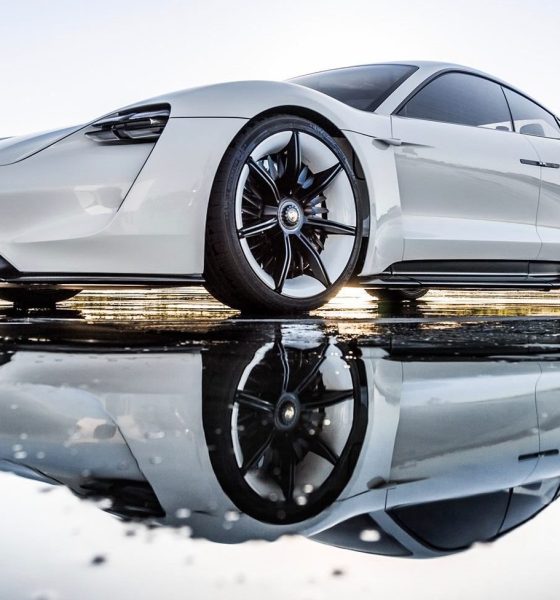
News
Porsche starts preparing its Zuffenhausen site for the Taycan’s production ramp
Porsche is setting the stage for the ramp of one of its most important vehicles to date — the Taycan — the veteran carmaker’s first all-electric car. The Taycan is expected to start production sometime in 2019, and to ensure that its facilities are ready for the vehicle, projects are now underway in Porsche’s Zuffenhausen facility, which will house the manufacturing line for the electric sedan.
The pedigreed carmaker has decided to set up the Taycan’s production lines in Zuffenhausen, a site with a long, storied history. Several cars, among them the iconic Porsche 911, the 718 Boxster, and the 718 Cayman, are built on the same location. A press release from Porsche notes that for the Taycan’s upcoming ramp, the company is creating 1,500 jobs and investing €700 million (over $797 million) to augment and prepare its facilities.
Several aspects of Porsche’s projects in Zuffenhausen stand out, particularly a conveyor system that transports drive system components and painted e-car bodies from the paint shop to the assembly line. The conveyor system is impressive, standing at a height of twenty meters above a four-lane main road in Stuttgart, which divides the site in half.
- Porsche’s upcoming Taycan production facilities in Zuffenhausen, Germany. (Photo: Porsche)
- Porsche’s upcoming Taycan production facilities in Zuffenhausen, Germany. (Photo: Porsche)
Porsche’s upcoming Taycan production facilities in Zuffenhausen, Germany. (Photo: Porsche)
Porsche also notes that the assembly and logistics hall for the Taycan’s production will be its largest building complex in Zuffenhausen. The company describes the construction of the structure as a balancing act, considering that the facility must be completed while the production of the 911, Boxster, and Cayman are continuing their usual output. Reiner Luth, head planner for the factory project, compares the balancing act to a medical procedure.
“The heart of Porsche beats in Zuffenhausen. We’re basically doing open-heart surgery,” he said.
Porsche has also shared images of its paint shop, whose steel structure is self-supporting. The company notes that final work on the Taycan’s paint shop is already underway. The Taycan’s body shop, which will be the second-largest building in the Zuffenhausen facility, is also being developed. Pre-production bodies of the 911 and later, the Taycan, will be made on the building.
Just like its rival, Tesla, Porsche intends to make its Zuffenhausen as environmentally-friendly as possible. Jürgen King, head of central construction management for the site’s expansion, explains that the factory will eventually be a C02-neutral plant. King also notes that the pace of the project is so far the fastest-moving in Porsche’s history.
- Porsche’s upcoming Taycan production facilities in Zuffenhausen, Germany. (Photo: Porsche)
- Porsche’s upcoming Taycan production facilities in Zuffenhausen, Germany. (Photo: Porsche)
Porsche’s upcoming Taycan production facilities in Zuffenhausen, Germany. (Photo: Porsche)
“Given these framework conditions, what we have is not only the biggest but also the fastest-moving construction site in Porsche’s history. When we’re finished expanding the factory for the Taycan, Porsche will produce zero-emission cars in a CO2-neutral plant. And that is a well-rounded result,” he said.
Porsche notes that the demand for the Taycan has been very impressive so far. Last year, the legacy automaker opened pre-orders for the vehicle, and the reception has been so positive that Porsche is now increasing the initial production of the vehicle. As noted by Porsche CEO Olliver Blume, for one, the company has logged almost 3,000 Taycan reservations in Norway alone. That’s a country where Porsche sells about 600 vehicles per year on average.
While the Taycan is about to enter production, Porsche is yet to unveil the final design of the all-electric car’s release version. So far, Porsche employs several dozens of camouflaged prototypes for testing, as well as a working version of the Mission E sedan concept car to promote the vehicle. In the company’s promotional materials for the car, Porsche states that despite the lack of engine in the Taycan, the all-electric car will still have the ever-present “soul” found in all of its other vehicles.

News
Tesla FSD fleet is nearing 7 billion total miles, including 2.5 billion city miles
As can be seen on Tesla’s official FSD webpage, vehicles equipped with the system have now navigated over 6.99 billion miles.

Tesla’s Full Self-Driving (Supervised) fleet is closing in on almost 7 billion total miles driven, as per data posted by the company on its official FSD webpage.
These figures hint at the massive scale of data fueling Tesla’s rapid FSD improvements, which have been quite notable as of late.
FSD mileage milestones
As can be seen on Tesla’s official FSD webpage, vehicles equipped with the system have now navigated over 6.99 billion miles. Tesla owner and avid FSD tester Whole Mars Catalog also shared a screenshot indicating that from the nearly 7 billion miles traveled by the FSD fleet, more than 2.5 billion miles were driven inside cities.
City miles are particularly valuable for complex urban scenarios like unprotected turns, pedestrian interactions, and traffic lights. This is also the difference-maker for FSD, as only complex solutions, such as Waymo’s self-driving taxis, operate similarly on inner-city streets. And even then, incidents such as the San Francisco blackouts have proven challenging for sensor-rich vehicles like Waymos.
Tesla’s data edge
Tesla has a number of advantages in the autonomous vehicle sector, one of which is the size of its fleet and the number of vehicles training FSD on real-world roads. Tesla’s nearly 7 billion FSD miles then allow the company to roll out updates that make its vehicles behave like they are being driven by experienced drivers, even if they are operating on their own.
So notable are Tesla’s improvements to FSD that NVIDIA Director of Robotics Jim Fan, after experiencing FSD v14, noted that the system is the first AI that passes what he described as a “Physical Turing Test.”
“Despite knowing exactly how robot learning works, I still find it magical watching the steering wheel turn by itself. First it feels surreal, next it becomes routine. Then, like the smartphone, taking it away actively hurts. This is how humanity gets rewired and glued to god-like technologies,” Fan wrote in a post on X.
News
Tesla starts showing how FSD will change lives in Europe
Local officials tested the system on narrow country roads and were impressed by FSD’s smooth, human-like driving, with some calling the service a game-changer for everyday life in areas that are far from urban centers.

Tesla has launched Europe’s first public shuttle service using Full Self-Driving (Supervised) in the rural Eifelkreis Bitburg-Prüm region of Germany, demonstrating how the technology can restore independence and mobility for people who struggle with limited transport options.
Local officials tested the system on narrow country roads and were impressed by FSD’s smooth, human-like driving, with some calling the service a game-changer for everyday life in areas that are far from urban centers.
Officials see real impact on rural residents
Arzfeld Mayor Johannes Kuhl and District Administrator Andreas Kruppert personally tested the Tesla shuttle service. This allowed them to see just how well FSD navigated winding lanes and rural roads confidently. Kruppert said, “Autonomous driving sounds like science fiction to many, but we simply see here that it works totally well in rural regions too.” Kuhl, for his part, also noted that FSD “feels like a very experienced driver.”
The pilot complements the area’s “Citizen Bus” program, which provides on-demand rides for elderly residents who can no longer drive themselves. Tesla Europe shared a video of a demonstration of the service, highlighting how FSD gives people their freedom back, even in places where public transport is not as prevalent.
What the Ministry for Economic Affairs and Transport says
Rhineland-Palatinate’s Minister Daniela Schmitt supported the project, praising the collaboration that made this “first of its kind in Europe” possible. As per the ministry, the rural rollout for the service shows FSD’s potential beyond major cities, and it delivers tangible benefits like grocery runs, doctor visits, and social connections for isolated residents.
“Reliable and flexible mobility is especially vital in rural areas. With the launch of a shuttle service using self-driving vehicles (FSD supervised) by Tesla in the Eifelkreis Bitburg-Prüm, an innovative pilot project is now getting underway that complements local community bus services. It is the first project of its kind in Europe.
“The result is a real gain for rural mobility: greater accessibility, more flexibility and tangible benefits for everyday life. A strong signal for innovation, cooperation and future-oriented mobility beyond urban centers,” the ministry wrote in a LinkedIn post.
News
Tesla China quietly posts Robotaxi-related job listing
Tesla China is currently seeking a Low Voltage Electrical Engineer to work on circuit board design for the company’s autonomous vehicles.

Tesla has posted a new job listing in Shanghai explicitly tied to its Robotaxi program, fueling speculation that the company is preparing to launch its dedicated autonomous ride-hailing service in China.
As noted in the listing, Tesla China is currently seeking a Low Voltage Electrical Engineer to work on circuit board design for the company’s autonomous vehicles.
Robotaxi-specific role
The listing, which was shared on social media platform X by industry watcher @tslaming, suggested that Tesla China is looking to fill the role urgently. The job listing itself specifically mentions that the person hired for the role will be working on the Low Voltage Hardware team, which would design the circuit boards that would serve as the nervous system of the Robotaxi.
Key tasks for the role, as indicated in the job listing, include collaboration with PCB layout, firmware, mechanical, program management, and validation teams, among other responsibilities. The role is based in Shanghai.
China Robotaxi launch
China represents a massive potential market for robotaxis, with its dense urban centers and supportive policies in select cities. Tesla has limited permission to roll out FSD in the country, though despite this, its vehicles have been hailed as among the best in the market when it comes to autonomous features. So far, at least, it appears that China supports Tesla’s FSD and Robotaxi rollout.
This was hinted at in November, when Tesla brought the Cybercab to the 8th China International Import Expo (CIIE) in Shanghai, marking the first time that the autonomous two-seater was brought to the Asia-Pacific region. The vehicle, despite not having a release date in China, received a significant amount of interest among the event’s attendees.
